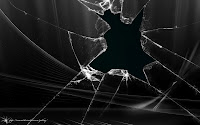Fashion Photography
Fashion photography started in 1839. There has always been an interest in fashionable clothes but when the idea of photographing came around it became very popular. Clothing companys started to use fashion photography so that it could help them sell and advertise their clothing. As fashion photography developed through out the years, photogtaphers started to bring in the idea of each photo could have a story or a mood to it. Now adays there are massive fashion magizines such as vogue that use fashion photography to advertise clothes and they are a massive part of the clothing and fashion industry.
http://en.wikipedia.org/wiki/Fashion_photography
When is an image a portrait and when is it a fashion photograph?
A portrait and a fashion photograph can be very similar because they can look the same exept they have different purposes. A portrait image is about the person in the picture only and it can be about their emotions and it focuses on the person in the image only. A fashion photograph is different to this because it is focused on the clothes the model is wearing and not the person. The point of having fashion photos done is for the people viewing the image to release the colour, size , texture of the clothes. Portrait photos can also be focused on groups of people suchb as families when the photographer does family portrait photos and the photographer would most probably tell the family to smile. In other portrait photos in a studio with one model then he will tell them to do other poses to express emotion. If the family or model are happy with their photos then they will buy the photos and they might be put in such places as their homes. This is diffeent to a fashion photograph because as the photos are based on a specific thing (the clothes) then the photos might be put in a fashion magazine. An example of one of the worlds most large and popular fashion magazines is Vogue magazine. Once portrait photos have been taken they do not get edited and this means that it shows the model in the images as naturally as possible. Where as once fashion photos have been taken they are edited on computers to make the model look 'perfect', this can involve doing such things to them as making their bodys thinner, taking away such things as freckles and spots. This means that fashion photos can be made to out be fake in its ways. Another difference between portrait photos and fashion photographs is that when portrait photos are being done it is really calm for the model and also the person viewing the image once it has been taken can feel this even if they werent there when the photo was taken. When you are viewing a fashion photograph you can see that it must have been very stressfull for the crew to set up everything as they might have had a lot of things to do such as making a specific setting within a time shedule. You can just tell that it must have been frustrating in all when you are looking at a fashion photo. This is a difference between them that you can only feel because it might not be an exxpression that you can see. This all shows that when you think about it there are a lot of differences for when a photograph is a portait photo and when it is a fashion photo and these differences can be both visualy seen and emotionally seen.
NOTES
When is an image a portrait and when is it a fashion photograph
They look the same but they have different purposes. The fashion photography is about the clothes and a portrait picture is only about the person in the photograph.
To what degree should an image be manipulated to go into a fashion magazine?
The image is all about advertising so it has to be able to sell. There is a lot of make up applied to the selected model, and then the image is edited and finalised in a computer programme to do such things as make the models body thinner or stretch their neck.












